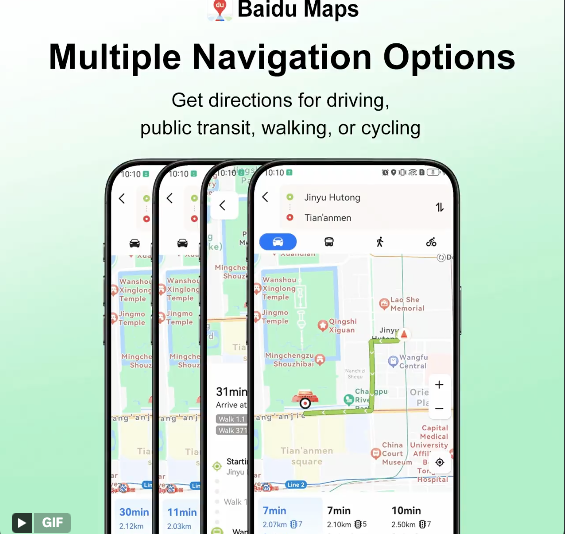Which Navigation App Should I Use When Traveling in China?
Which Navigation App Should I Use When Traveling in China? By xiaoyueJune 8 2025 Navigation software is essential for modern travel, but choosing the right app can be challenging for international visitors to China. For iPhone and Mac Users If you’re using Apple devices, Apple Maps actually works better than Google Maps in China. It offers an English interface and functions without requiring a VPN, making it a convenient choice for iOS users. For Android Users If you’re using Apple devices, Apple Maps actually works better than Google Maps in China. It offers an English interface and functions without requiring a VPN, making it a convenient choice for iOS users. Recommended Chinese Navigation Apps Until recently, Chinese mapping apps weren’t practical for international travelers unless they could read Chinese. However, both major Chinese mapping platforms now offer multilingual support, making them highly recommended options: Amap (Gaode Maps) – Highly Recommended for Both iOS and Android Amap is the top recommendation for travelers in China: Key Features: Widely used throughout China (owned by Alibaba, same company as Alipay) Provides real-time traffic information Multiple transportation modes: driving, public transit, cycling, walking Integrated taxi booking functionality Multilingual interface available in English, Japanese, and Korean Location names are primarily displayed in Chinese Optional registration for syncing favorites across devices Comprehensive offline maps Phone number registration can be skipped without affecting functionality Baidu Maps – Strong Alternative Option Baidu Maps is another excellent choice: Key Features: Widely used across China (developed by Baidu, China’s major search engine company) Excellent AR walking navigation feature Comprehensive street view imagery Dual-language interface support Particularly strong for public transportation routes No mandatory registration required Registration optional but unlocks additional features like location history Offline maps available Apple Maps – Good for iOS Users For iPhone users, Apple Maps deserves consideration: Advantages: Native English search, display, and navigation functions Works directly in China without additional setup Familiar interface for Apple users Limitations: Updates in China are sometimes delayed Occasional accuracy issues due to slower data updates Google Maps – Familiar but Limited While you’re likely familiar with Google Maps, its functionality in China is restricted: Requires VPN access Reduced reliability and accuracy Best used as a backup option alongside Chinese apps Useful for English searches and international POI recognition Strategic Usage Tips A、Multi-App Approach Primary Navigation: Use Gaode for driving and cycling; Baidu for walking with AR assistance International Reference: Keep Google Maps for English searches and global location names Offline Backup: Consider Maps.me or HERE WeGo for offline capabilities B.Chooseby Transportation Mode Driving: Gaode offers the best traffic insights; Baidu is also reliable Public Transportation: Baidu provides more detailed bus and train route information、 Walking: Baidu’s AR navigation feature excels for pedestrian navigation Cycling: Gaode considers terrain and cycling-specific routing Intercity Rail: Use dedicated apps like 12306 or High-Speed Rail Assistant for bookings, then use Gaode for station navigation C、LanguageConsiderations Both Gaode and Baidu offer English interfaces but may display location names primarily in Chinese Google Maps remains ideal for international travelers seeking English content, despite reduced reliability in China Consider downloading translation apps to help with Chinese place names Final Recommendation For the best experience traveling in China, download both Gaode and Baidu Maps before your trip. Use them as your primary navigation tools while keeping Google Maps as a supplementary reference for English searches. This multi-app strategy will ensure you have reliable navigation regardless of your location or transportation method within China. Related News Transportation Guide for Traveling in China
Which Navigation App Should I Use When Traveling in China? Read More »






